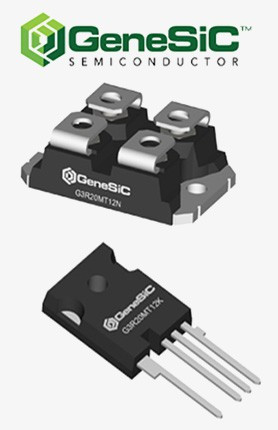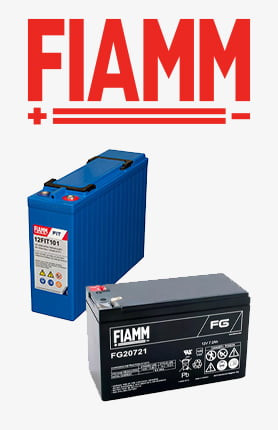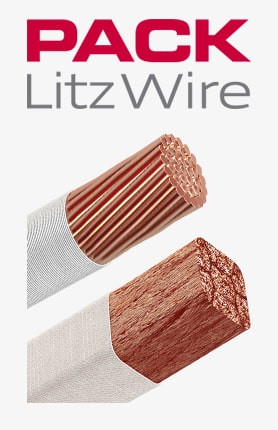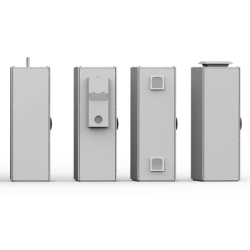Vous devez être connecté
-
WróćX
-
Composants
-
-
Category
-
Semi-conducteurs
- La diode
- Les thyristors
- Modules de puissance isolés
- Ponts redresseurs
-
Transistors
- Transistors | GeneSiC
- Modules MOSFET SiC | Mitsubishi
- Modules MOSFET SiC | STARPOWER
- Modules MOSFET SiC ABB
- Modules IGBT | MITSUBISHI
- Modules de transistors | MITSUBISHI
- Modules MOSFET | MITSUBISHI
- Modules de transistors | ABB
- Modules IGBT | POWEREX
- Modules IGBT | INFINEON (EUPEC)
- Composants semiconducteurs en carbure de silicium
- Przejdź do podkategorii
- Circuits de commande
- Blocs de puissance
- Przejdź do podkategorii
- Transducteurs électriques
-
Composants passifs (condensateurs, résistances, fusibles, filtres)
- Résistances
-
Fusibles
- Fusibles miniatures pour c.imp. série ABC et AGC
- Fusible rapides tubulaires
- Cartouches de courbe GL/GG et AM
- Cartouches ultrarapides
- Fusibles à action rapide (norme britannique et américaine)
- Fusibles à action rapide (norme européenne)
- Fusibles de traction
- Cartouche de haute tension
- Przejdź do podkategorii
-
Condensateurs
- Condensateurs pour moteurs
- Condensateurs électrolitiques
- Condensateurs de type snubbers
- Condensateurs de puissance
- Condensateurs pour circuits continus
- Condensateurs de compensation de puissance
- Condensateurs de haute tension
- Condensateurs pour chauffage par induction
- Condensateurs pour impulsions
- Condensateurs DC LINK
- Condensateurs pour circuits AC/DC
- Przejdź do podkategorii
- Filtres anti-interférences
- Supercondensateurs
- Protection contre les surtensions
- Filtres de détection des émissions TEMPEST
- Parafoudre
- Przejdź do podkategorii
-
Relais et contacteurs
- Théorie relais et contacteurs
- Relais statiques triphasés
- Relais statiques CC
- Régulateurs, circuits de commande et accessoires
- Démarrages progressifs et contacteurs inverseurs
- Relais electromécaniques
- Contacteurs
- Commutateurs rotatifs
-
Relais statiques monophasés
- Relais semi-conducteurs AC monophasés, série 1 | D2425 | D2450
- Relais à semi-conducteurs CA monophasés, séries CWA et CWD
- Relais à semi-conducteurs CA monophasés des séries CMRA et CMRD
- Relais à semi-conducteurs CA monophasés, série PS
- Relais semi-conducteurs AC double et quadruple, série D24 D, TD24 Q, H12D48 D
- Relais statiques monophasés, série GN
- Relais à semi-conducteurs CA monophasés, série CKR
- Relais AC monophasés SÉRIES ERDA ET ERAA pour rail DIN
- Relais CA monophasés pour courant 150A
- Relais à semi-conducteurs doubles intégrés à un dissipateur thermique pour un rail DIN
- Przejdź do podkategorii
- Relais statiques monophasé pour c.imp.
- Relais d'interface
- Przejdź do podkategorii
- Composants inductifs
- Radiateurs, varistances, protections thermiques
- Ventilateurs
- Climatiseurs et accessoires d'armoires électriques
-
Batteries, chargeurs, blocs d'alimentation tampon et onduleurs
- Batteries et Chargeurs - théorie
- Batteries Li-ion et non-standards. Systèmes de gestion des batteries (BMS)
- Batteries
- Chargeurs de batteries et accessoires
- Alimentation de secours UPS et alimentation tampon
- Convertisseurs de tension et accessoires pour photovoltaïque
- Stockage d'Energie
- Réservoirs de carburant
- Batteries lithium-ion
- Przejdź do podkategorii
-
Automatique industrielle
- Élévateurs Spiralift
- Pièces pour drones Futaba
- Interrupteurs de fin de course, micro-rupteurs
- Capteurs et convertisseurs
- Pyromètres
- Compteurs, Relais temporisés, Indicateurs de tableau
- Appareils industriels de protection
- Signalisation lumineuse et sonore
- Caméra thermique
- Afficheurs à LED
- Boutons et commutateurs
- Przejdź do podkategorii
-
Câbles et chemins de câbles
- Fils
- Passe-câbles et coupleurs
- Fils de Litz
- Câbles pour les applications spéciales
- Gaines
-
Tresses
- Tresses plates
- Tresses rondes
- Tresses très souples - plates
- Tresses très souples - rondes
- Tresses cuivre cylindriques
- Tresses cuivre cylindriques et protection
- Bandes de mise à la terre souples
- Tresses en acier zingué et inox
- Tresses isolantes en PVC - temp. 85°C
- Tresses plates en aluminium
- Kit de liaison - tresses et gaines
- Przejdź do podkategorii
- Equipement pour la traction
- Cosses
- Barres flexible isolées
- Barre flexibles multicouches
- Systèmes de traçage des câbles
- Przejdź do podkategorii
- Contactez-nous !
-
Semi-conducteurs
-
-
- Fournisseurs
-
Applications
- Alimentations (UPS) et systèmes de redressement
- Automatisation HVAC
- Automatisation industrielle
- Chauffage par induction
- Composants pour atmosphères potentiellement explosives (EX)
- Dispositifs de protection industriels
- Énergétique
- Energy bank
- Équipements pour armoires de distribution, de contrôle et de télécommunications
- Impression
- Machines à souder et machines à souder
- Machines de séchage et de traitement du bois
- Machines pour le thermoformage des plastiques
- Machines-outils CNC
- Mesure et régulation de la température
- Mesure et régulation de la température
- Mines, métallurgie et fondation
- Moteurs et transformateurs
- Traction de tram et de chemin de fer
- Variateurs CA et CC (onduleurs)
-
Installation
-
-
Inducteurs
-
-
Appareils à induction
-
-
Service
-
- Contact
- Zobacz wszystkie kategorie
Why Invest in Industrial Control Cabinet Air Conditioning? ROI and Extended Component Lifespan

Introduction
In industrial conditions, the reliability of automation systems depends not only on the quality of the components used but also on the environment in which they operate. One of the key factors influencing their durability and stability is the temperature inside control cabinets. Even slight exceedances of acceptable values can lead to unexpected downtime, costly failures, or shortened equipment lifespan.
Why Do Components Need Cooling?
Electronic devices such as inverters, PLCs, power supplies, or communication modules generate heat during normal operation. In the confined space of a control cabinet, this heat accumulates, and if not effectively dissipated, the internal temperature can quickly exceed the permissible limits set by equipment manufacturers.
Here’s what can happen when the cabinet temperature exceeds safe levels:
- Shortened lifespan of electronic components,
- Lower operational reliability – increased susceptibility to system errors and device reboots,
- Increased risk of failures and thermal damage,
- Production downtime costs due to necessary repairs or equipment replacements.
In many cases, passive cooling systems (e.g., natural ventilation) are insufficient, especially in applications operating at elevated ambient temperatures, with high component density, or in dusty environments.
That’s why active cooling systems, such as industrial air conditioners, not only increase installation reliability but also directly reduce operational costs.
ROI – Is Air Conditioning Really Worth It?
Investing in industrial air conditioning for control cabinets may seem expensive at first, but in many cases, it pays off faster than expected. Let’s analyze it through the lens of Return on Investment (ROI).
1. Extended Component Lifespan
Industrial electronics are typically designed to operate at temperatures up to 40–45°C. Exceeding this threshold leads to:
- Degradation of electrolytic capacitors,
- Shortened lifespan of power supplies and inverters,
- Decreased reliability of PLCs.
➡ It’s estimated that every +10°C above nominal temperature shortens device lifespan by 50%. This means that investing in cooling can double the lifecycle of many components.
2. Reduction of Unplanned Downtime
A control cabinet failure can stop the entire production line, and every minute of downtime costs:
- From several to tens of thousands of PLN per hour (depending on the industry),
- Additional hours of maintenance team work,
- Potential material losses and production delays.
➡ Air conditioning prevents overheating and thermal faults – reducing downtime risk.
3. Lower Maintenance Costs
Maintaining the proper temperature extends mean time between failures (MTBF), which means:
- Less frequent part replacements,
- Fewer service interventions,
- Reduced spare parts inventory and logistics costs.
4. Predictability and Monitoring
Modern industrial air conditioners (e.g., nVent SpectraCool) offer:
- Remote monitoring via Modbus/RS485,
- Temperature overrun alarms,
- Temperature trend analysis.
➡ This enables predictive maintenance and planned servicing without surprises.
Conclusion: The cost of purchasing and installing an air conditioner often pays off within 1–2 years, thanks to reduced failures and associated costs.
What to Consider When Choosing a Control Cabinet Air Conditioner?
1. Cooling Capacity (W, BTU/h)
Select the air conditioner based on the calculated thermal load. For example:
- Cabinet in a production hall: approx. 500–1000 W,
- Cabinet in an outdoor container: often over 1000 W.
It’s recommended to add a 15–20% power margin for variable factors such as rising ambient temperature or future component additions.
2. Environmental Conditions
Consider the environment in which the cabinet operates:
- Dust, dirt, oil mist → choose an air conditioner with IP54–IP66,
- High ambient temperatures → required operation range up to 55°C or more,
- Outdoor installations → models resistant to weather, preferably INOX or with anti-corrosion coating.
3. Mounting Type
Different mounting variants are available:
- Side-mounted – most popular, easy to service,
- Roof-mounted – saves side cabinet space,
- Internal door-mounted – if the cabinet is placed close to other equipment.
4. Communication and Integration
Modern air conditioners offer integration with SCADA/BMS systems:
- RS485, Modbus, Ethernet interfaces,
- Temperature alarms, compressor control,
- Remote management and diagnostics capabilities.
5. Manufacturer and Service
Choose devices from reputable manufacturers (e.g., nVent), who offer:
- Long-term support,
- Availability of spare parts,
- Selection tools and online calculators.
Summary
Investing in industrial control cabinet air conditioning is not just a cost – it's a way to ensure the continuity of automation and energy systems. Maintaining stable internal cabinet temperature:
- Extends the lifespan of electronic components,
- Minimizes the risk of failures and downtimes,
- Increases the reliability of control systems,
- Reduces service and equipment replacement costs.
With a properly selected cooling system, a high ROI (Return on Investment) is achievable – often within 1–2 years in environments with high dust levels or elevated temperatures.
Modern air conditioners also offer remote monitoring features, SCADA/BMS integration, and IP54–IP66 protection, making them an ideal solution for demanding industrial applications.
Produit associé
Articles similaires
 Thermally conductive materials in power storages
Thermally conductive materials in power storages
 Measuring power and energy in electric circuits
Measuring power and energy in electric circuits
 Wentylatory przemysłowe - rodzaje, właściwości
Wentylatory przemysłowe - rodzaje, właściwości





Laissez un commentaire